Formula 1's new order
Formula 1 has finally been forced into embracing wide-ranging radical change. Mark Hughes considers the possibilities of its looming transformation
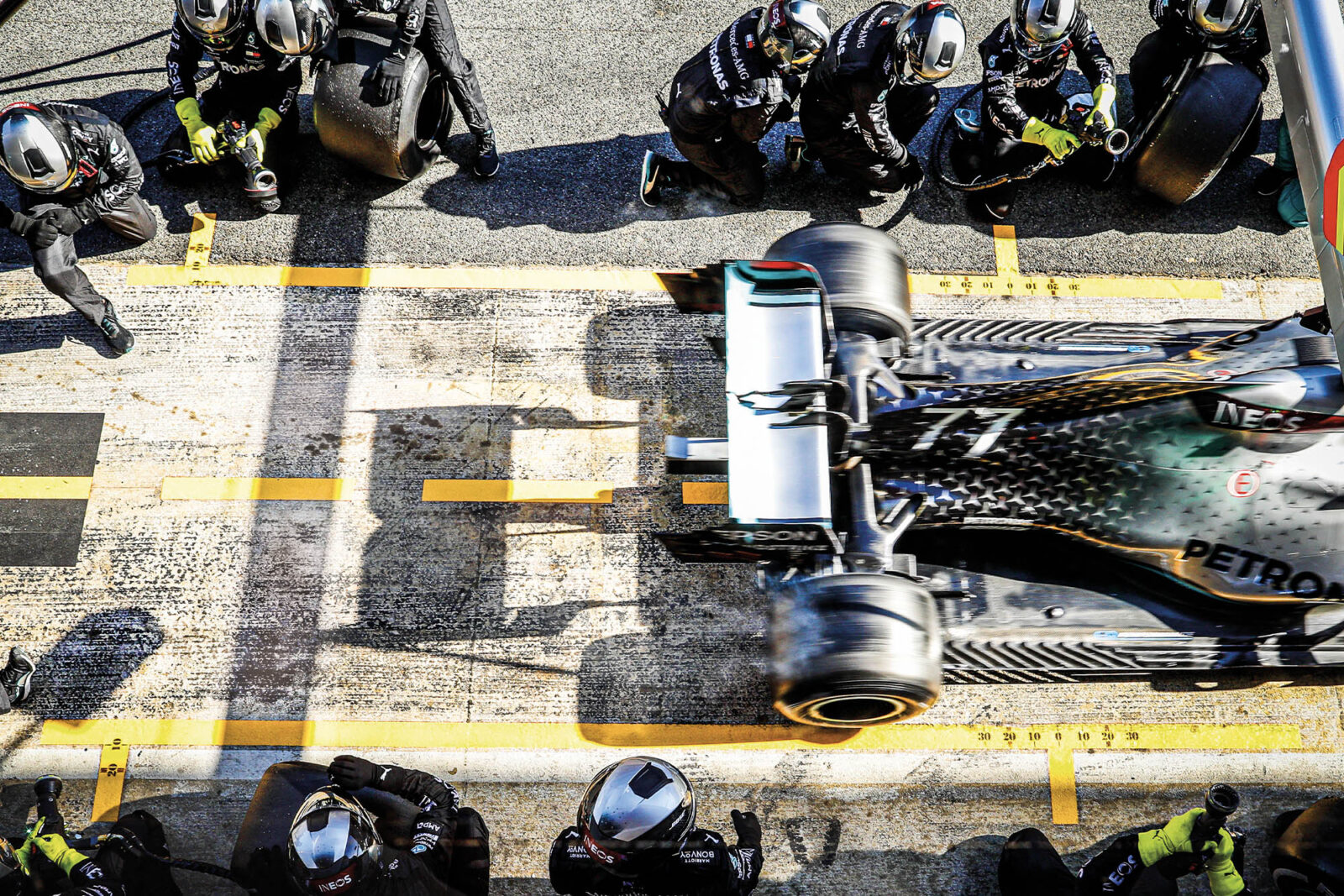
Wind tunnel time, big budgets and plenty of resource created this 2020 Mercedes, but revolution is close...
The latest regulation restrictions upon Formula 1 reflect a post-pandemic reality, but the underlying issue has been staring it in the face for years. As F1 readjusts itself to this new reality, might it be the beginning of a return to a non- automotive manufacturer future?
The FIA has enshrined both a reduced cost cap and a sliding-scale wind tunnel/ CFD restriction into the F1 regulations, starting next year. The COVID-19 pandemic has given extra impetus, but F1 was already heading in this direction, facing the consequences of the stark difference of scale between automotive team spends and those of the independents in an already economically challenging time.
This mismatch is not new, but the concurrent contraction of the global economy post-2008 and the severe payment imbalance between top teams and the others (in force since the 2013 Concorde Agreement), made the situation untenable.
The latest changes – on top of the existing delay of the new-generation cars from next year to 2022 – are just the shrinking pains resulting from the unsustainable spend reached during the vast expansion of the late 1990s and 2000s. This is F1 trying to rebalance itself after harvesting the vast major car maker riches of the past. But what specifically, are these looming changes?
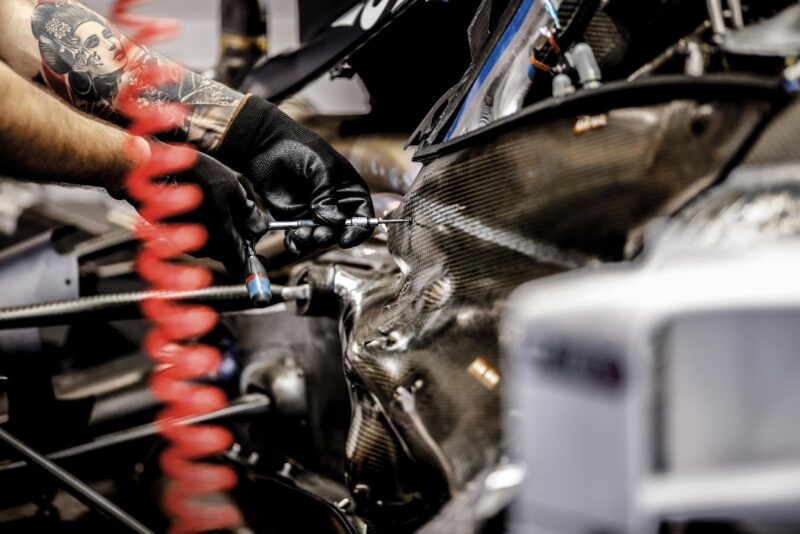
Up close with a mechanic during 2020 pre-season tests. New rules are set to impact F1 teams’ workforce
Budget cap
The FIA has been trying to impose some form of budget cap on F1, on and off, for around 12 years. The attempts floundered, and Bernie Ecclestone didn’t believe in the principle and never got behind it. It was Liberty’s acquisition of F1 that brought the idea back onto the agenda as it realised its projected future income streams did not sit well with the level of payments needed to feed teams that had grown exponentially in the boom years. The spend had to be constrained to keep the F1 business thriving.
Against initial resistance from the three highest-spending teams, the concept has been accepted. From next year, no team may spend more than $145m, down from $175m planned before the pandemic. This reduces to $140m in 2022 and $135m from 2023-25. There are exemptions from these numbers for engines, marketing, driver salaries and the salaries of the top three employees other than drivers.
The following costs are also exempt: staff on maternity or on sick leave, tyre tests, employee medical benefits, tax, redundancy payments, employee bonuses, non-F1 activity costs, property costs, fees, cost of buying engines (capped at $15m per teams), flights, hotels. Essentially, anything not performance-related is exempt. There will be an extra $1m allowance for each extra race over 21, or a reduction for less than 21. If inflation exceeds 3 per cent, it will be reflected in the adjustment of the cap. There is a $45m allowance for capital costs over four years, 2021-24. Listed parts – those allowed to be made by one team and sold to another, as per Mercedes/Racing Point or Ferrari/Haas – have been allocated a nominal value that will be subtracted from the cap of those teams buying them. When added up, it will make a difference of around $20m that the customer teams cannot spend, so as not to unduly punish the bigger teams with R&D costs associated with manufacture.
Taking those same exemptions out of the 2019 team budgets, Mercedes was spending an estimated $230m, Ferrari an estimated $205m and the Red Bull team an estimated $195m. The budget cap represents potentially quite painful cuts, especially for Mercedes and Ferrari with their staff of 1200- 1500 people. Both those teams are already talking of contesting additional series to minimise redundancies and the loss of core skills. Even Red Bull’s Christian Horner is looking at redeployment rather than redundancies: “People are our biggest asset and, where possible, we will look to protect as many jobs as we possibly can.”
This raises an interesting point: these teams feel they can afford their current level of spend, thank you very much, and if they are to be artificially constrained by F1, then they’ll spend the surplus elsewhere, although in Horner’s case the budget could be imposed upon him, and owner Dietrich Mateschitz may not share his spending ambivalence.
As for the other teams, the budget cap represents a small trimming for Renault and McLaren but is still well above what Racing Point, Haas, Alfa Romeo, Toro Rosso and Williams were spending and, as such, it does not directly affect them.
Furthermore, several technical cost- drivers will have certain restrictions and freezes applied. Some components, including the chassis and gearbox, have been frozen between 2020-21. A token system will be used to allow a very limited number of modifications, such as McLaren needing to make changes to accommodate a switch to Mercedes power. From ’21 there will be a limitation on the number of upgrades a power unit manufacturer can make in a season. There will be a list of standardised smaller parts, and there will be an open-source design system for certain specified components, meaning any team can have access to design and manufacture details. It might allow smaller teams access to solutions they might otherwise not be able to afford to research – and it makes excessive levels of spend on those items by the big teams pointless, as the solutions can be easily copied.
The penalties reserved by the FIA for breaching the cap include: financial, sporting, cost cap reduction, reprimand, loss of points, race bans, limitations on testing (including simulation) or championship exclusion.
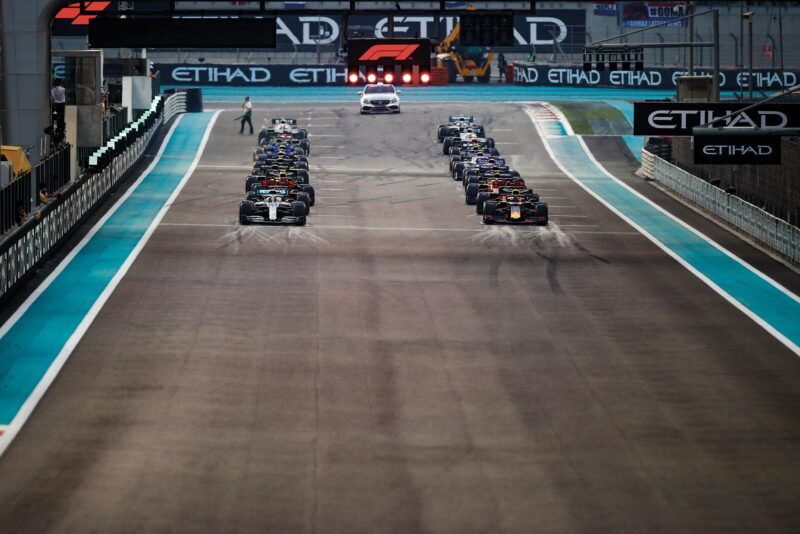
Merc, Red Bull and Ferrari up front in Bahrain 2019. Will such dominance end?
Zak Brown, presiding over a McLaren team that recently had to make 70 redundancies in the F1 team as part of a 1200 trim throughout the whole group, said upon the confirmation of the cap: “Formula 1 wins today. This is a crucially important moment for our sport. F1 has been financially unsustainable for some time, and inaction would have risked the future of F1 and its participants, who are to be commended for resolving this issue collectively and determinedly. A uniform budget cap, in concert with more even distribution of revenue among the teams, will ensure greater competition and more people wanting to watch live and on TV, driving more sustained revenues to underpin the long-term financial health of the teams and the sport.”
Renault’s Cyril Abiteboul was similarly relieved: “Whether you are looking at the budget cap, [or] more containing the arms race on the engine development with dyno restrictions, but also the Concorde with a better money distribution… Clearly that is really putting us in a safer place for our commitment to Formula 1.”
Sliding-scale aero simulation
Currently, teams are limited to a blanket 65 runs per week in their nominated wind tunnel (CCTV cameras linked to the FIA are fitted in each team’s tunnel) and a complex teraflop restriction on CFD capacity.
From next year, the tunnel restriction will be tightened to 40 runs per week. But that is just the nominal limit – because both the tunnel time and CFD restrictions will be correlated to a team’s performance over the previous 12 months. The top teams will not be allowed as much simulation time as the lower teams. The incremental reduction in allowed capacity between championship positions will be 2.5 per cent next year, but 5 per cent thereafter – as shown in the table below, where it can be seen that from 2022 the bottom-finishing team will be allowed 45 per cent more aero simulation than the championship-winning team. Effectively, this would mean the top team is only able to make 28 runs per week in the tunnel compared to 46 runs for the bottom team.
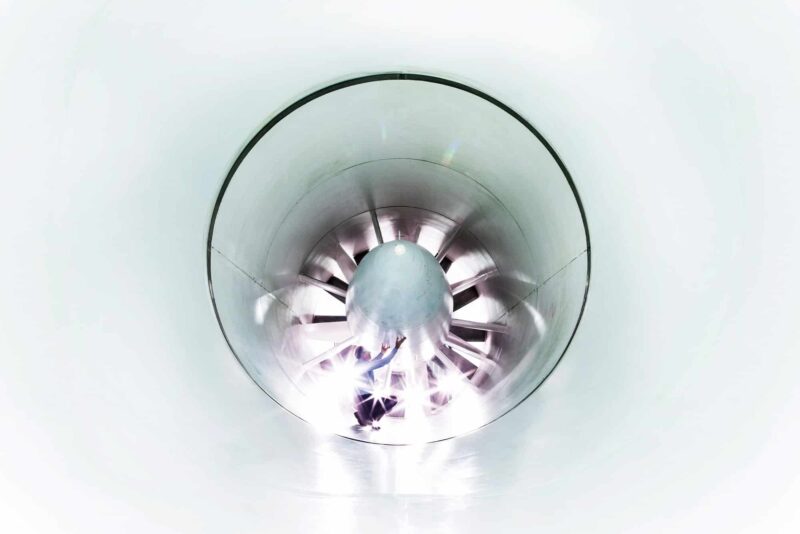
Wind tunnel time will be one of the key methods by which F1 will attempt to level the playing field
Mercedes technical director James Allison unsurprisingly seems to have his enthusiasm for the new restrictions well under control. “There are things behind it that are a bit awkward,” he said. “This regulation is being introduced next year, so it will start in 2021, but consider what that means.
“In 2021 we’re all going to be running cars that are largely frozen, carried-over cars from 2020. Our significant axis of work in 2021 is going to be on preparing this new-generation car for 2022. The majority of the aerodynamics that you can afford to invest in 2021 is going to be on the following season, 2022. So the amount of aerodynamics that you can bring to bear for 2022 is going to be determined by how good you were in 2020.
“So this entirely new blank sheet of paper car, which has got nothing to do whatsoever with the current generation of cars, you’re fortunate in that the championship is to some extent influenced by how strong you were in 2020, two seasons previously. That’s a really laggy feedback system that is likely to encourage you to game a championship because if you are not very good in 2020 it suits you to be really bad, as long as you know you can survive into 2021 and beyond. Then you’ll have a really good run in at this new car. I guess that’s the nature of the challenge, but it’s maybe not as obvious on the first reading of those regulations [as to] just how long the shadow is that they cast.”
It’s a balance of performance measure, of penalising success; softer than the crude success ballast used elsewhere but still the first time the principle has been allowed into F1. The feeling at those top teams is not that it will radically change the competitive order – but that it may make it impossible to achieve the sort of long-running serial title-winning feats achieved by Ferrari 2000-04, Red Bull 2010-13 and Mercedes 2014 to date.
Automotives or independents?
The possibility of the cap pushing Ferrari, and possibly Mercedes, into other categories in addition to F1 – including IndyCar and/or the World Endurance Championship in Ferrari’s case – underlines the fact that these entities can easily afford F1 even at current levels.
This has shone a light on a nuance within the mismatch in scale between automotive manufacturers and independent F1 teams. The current budgets are only huge by the standards of F1. By those of the car industry they are relatively small. The cost cap may have allowed the financially beleaguered Renault to continue in F1, but the cap has done little to make F1 more attractive to any other manufacturer. For automotives, the cost was never the issue. Relevance was and still is a priority. Performance values are becoming increasingly obsolete in the marketing of road cars. Environmental virtue-signalling may not be compatible with F1 either.
Volkswagen/Audi/Porsche rejected F1 a couple of years ago in midst of dieselgate, and it was the only serious prospect outside the existing Mercedes, Ferrari, Renault, Honda line-up in the hybrid era.
The specification freeze and development restrictions soon to be applied to the hybrid power units, together with recent technical directives clamping down on whatever loopholes the FIA believes Ferrari found last year, is happening at a time when there is a tiny (around 10bhp) spread between the most and least powerful engines. This is great for closing up the grid, but it puts the engines back to the plug-in component status that they had reached at the end of the frozen-spec V8 era. The engine’s technical/R&D appeal to automotive companies is effectively gone.
Mercedes, through a combination of the team’s unique ownership structure with Toto Wolff and the level of its success, has become financially justifiable even at current spends. If Wolff, currently in negotiation with Daimler about a new contract beyond the end of this year, takes a less direct role in the team, enough to justify him being paid by Daimler rather than by the team, his salary would conceivably no longer be counted as one of the top three paid employees, leaving more spend for either F1 or other projects.
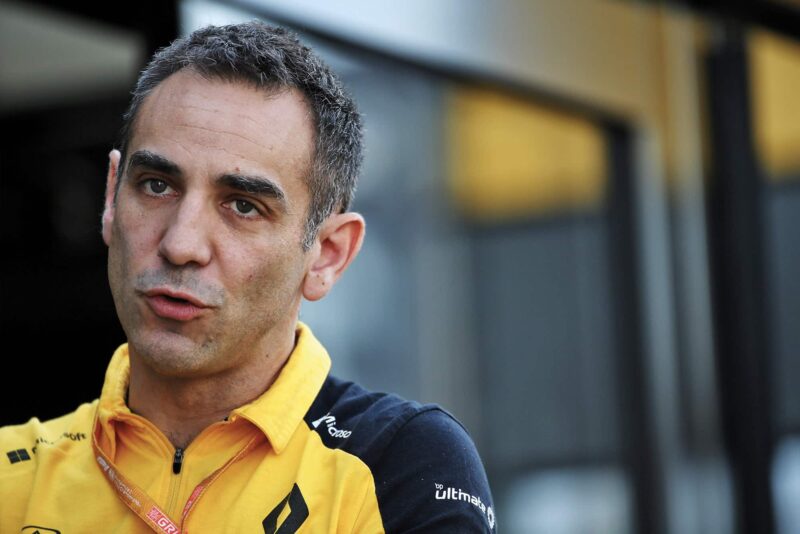
Cost cap helped keep Renault in F1, says Cyril Abiteboul
Renault believes that it can still see F1’s marketing benefit, and under the cap limits Renault feels it can now justify its spend. But according to some industry analysts, the company’s very future is in peril.
Ferrari is no longer really a Fiat automotive project. Since its listing on the stock exchange, Ferrari has become an independent entity only loosely tied to Fiat through mutual ownership. The strings are effectively cut. Ferrari is no longer really an ‘automotive’ team and is uniquely profiled to benefit from F1. Its massive spend arises from the massive income its revered brand commands, some of which has to come from F1.
Honda’s board is split on F1 and its contract with the Red Bull group runs only until the end of next year.
It looks as though the future of F1 could lie with billionaire private owners and further downsized teams that might even make a profit from F1, although that will be challenging in a decimated global economy. The Lawrence Strolls, Michael Latifis, Gene Haases, Dimitry Mazepins etc could be set to be the Ecclestone, Chapman, Williams, Dennis and Tyrrell of the future. Wolff could easily be part of this group. In a sense, it’s the turning of the wheel back to the core of independents that gave F1 its lifeforce from the late 1950s and through the ’60s, ’70s and some of the ’80s.
Williams’ business model appears to be wrong, and it’s now potentially for sale as a result of its dismal on-track performance of the last couple of years. McLaren is looking for new investors too, as it has become clear the Bahraini group don’t wish to dig any deeper. But the saviours of these teams – and those of the Enstone team if Renault doesn’t stay around – won’t be major car makers.
Concorde Agreement
In light of this incredibly delicate dynamic, it’s no surprise that the proposed new Concorde Agreement – the existing one runs out atthe end of this year – has been put on the backburner. No-one can be certain in the current environment as to what F1’s income is going to be, how financially robust the teams might be and what the commitment of the existing car makers might be. It is the wrong time to push anyone for a long-term commitment. To do so may force them to leave sooner rather than later. But that lack of a commitment by the participants, in turn, makes F1’s future less than assured. It’s no-one’s fault, but just the way it’s panned out.
Beyond 2025
Liberty’s Ross Brawn isn’t ready to give up on the automotive companies. Their presence is highly valued. By the FIA and Liberty.
“With the FIA and with the manufacturers, we’re now looking at what the next powertrain should look like,” he said recently. “With some of our partners we are now working on a strategy for introducing sustainable fuels into F1. So that will be a big element for the future. But really for the moment, I don’t have an idea on how the engine should look.”
Or indeed how F1 itself might look. These are changing times.

